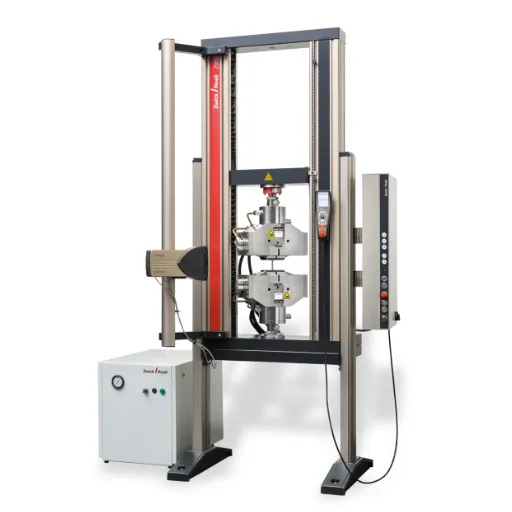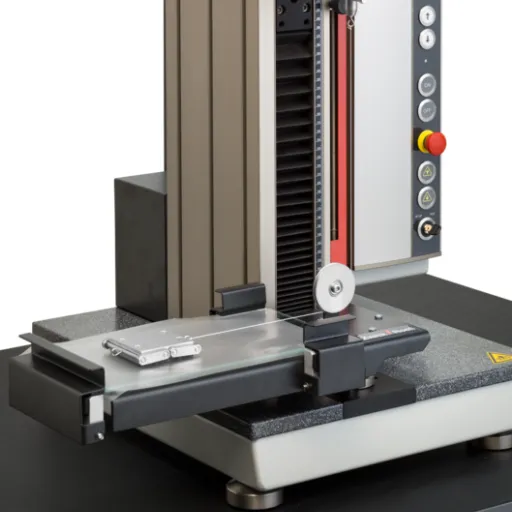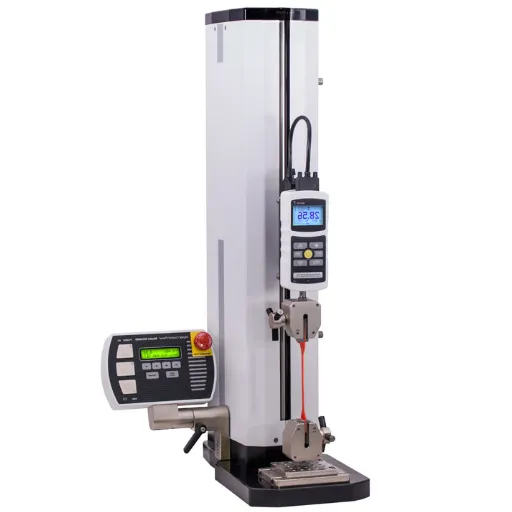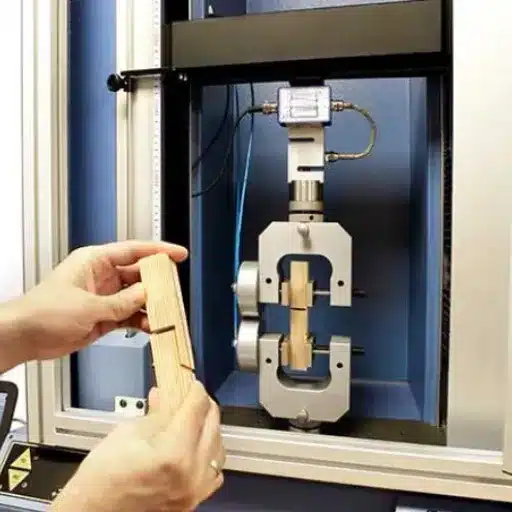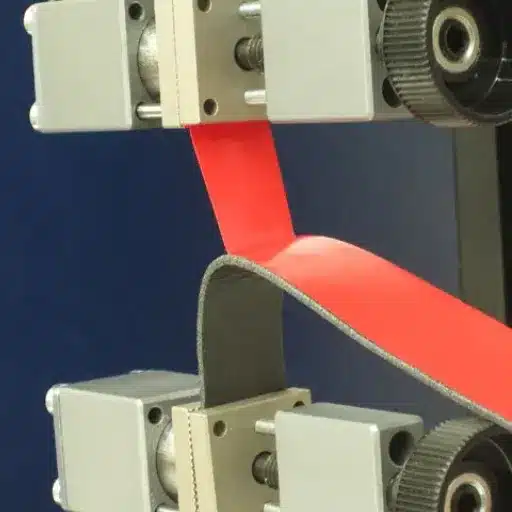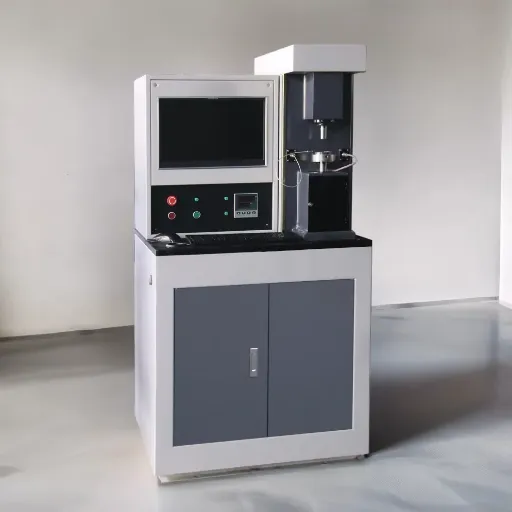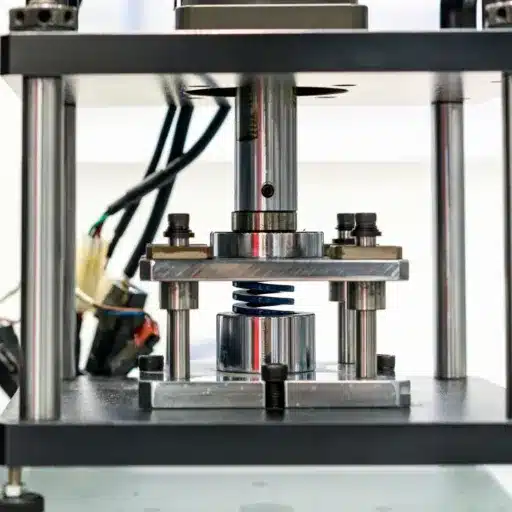Testing materials covers the fundamentals for making quality equipment. material properties, these machines help determine the strength, ductility, and overall performance characteristics essential for various industrial applications. This guide explores the progressive levels of testing from basic to advanced, covering devices, software, and controllers used in material testing.
Introduction to Material Testing Machines
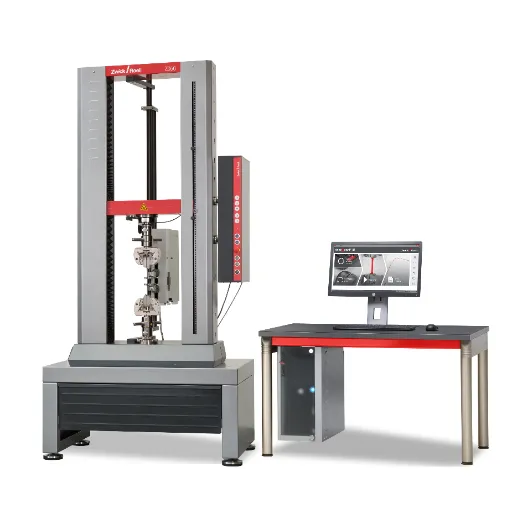
What is a Material Testing Machine?
A machine that can measure and test all physical and mechanical properties of any material is known as a material testing machine. Through this machine, one gets to know the behavior of the material when it undergoes different forces such as tension, compression, bending, and shear. The main aim behind this testing is to conform the suitability of the material for a proposed application, and to meet specific industry quality and safety requirements.
The machines operate by putting a material to test and then apply controlled forces in order to record the deformation as well as breaking point or impact resistance. The data thus collected plays an imperative role in the business since it can be used to measure the strength, ductility, toughness or the overall performance of the materials. Examples of mechanical tests carried out using these machines include tensile strength, hardness, and finally the impact resistance as well as fatigue tests. Every test gives a unique dimension to the materials behavior under specific conditions.
Key Industries Using Material Testing Machines:
- Construction
- Manufacturing
- Aerospace
- Automotive
Material Testing Machines are massively adopted in many industries such as construction, manufacturing, aerospace, and the automotive industry. By enabling the determination of material’s exact properties and limitations, the machine helps to advance research and development, better quality control, and enhance product safety. With the reliable and precise information they provide, engineers and manufacturers can now create instruments and devices that are more effective, robust, and reliable.
Importance of Material Testing in Quality Control
If material quality control checks are in place, they will promptly act against unfit materials and utilise them before starting production. Testing materials precisely means ensuring they are good in terms of strength, flexibility, the resistance to environment factors, as well as durability. This is done long before the materials are sent off for manufacturing. This sequence means your materials are intentionally put in place to solve a threat and therefore improves both the safety and the function of the materials to the users.
Regulatory Compliance
Function examination ensures regulatory and industry standards are maintained across various sectors, reducing legal issues and building consumer trust.
Innovation Support
Testing provides accurate data required for innovations, ensuring better product performance and efficiency in material modifications.
Function examination is not the only benefit achieved from the testing of materials; the additional benefit achieved from it is that of ensuring regulatory and industry standards are maintained. Numerous standards prevail in many industries such as safety in construction and reliability in aerospace. Material exams need to be done at regular intervals in order for these standards to be maintained, increasing the consistent crop and reducing the number of legal arguments which result in the building of consumer trust. By maintaining obedience, companies show compliance, showing an effort to offer the superior product.
The last and most vital significance of the testing, however, is the provision of accurate data required for innovations. This ensures better results in product performance and also a higher level of efficiency in terms of alteration of materials. The data that is collected during testing is analysed and kept as part of the quality control in the company, which means that in the long run, the efficiency of the company is significantly improved. The integrated tests allow the company to achieve a permanent level in the end-results and improve in the service that they offer.
Overview of Different Types of Material Testing
Industries like aerospace, manufacturing, and construction require various methods to check materials for their properties and performance, particularly materials that are unsuitable for resistive conditions. These safety and quality standards are met by material testing, which is why it is utilized in these industries.
| Testing Type | Purpose | Key Applications |
|---|---|---|
| Mechanical Testing | Tests strength, ductility, hardness, and impact resistance | Structural applications, high-stress environments |
| Thermal Testing | Evaluates material reactions to temperature changes | Extreme environment applications |
Mechanical material testing is a critical form of testing, especially when it comes to the strength, ductility, and hardness of materials, as it is also able to perform impact testing and the ability to resist extreme forces such as tensile, compressive, and impact loading. It also allows the determination whether materials are suitable and poses no risks for structural or high-stress applications. It is widely known to utilize techniques such as tensile testing and impact testing to verify and ensure that materials can withstand the desired applications.
In addition, thermal testing is another area of material evaluation which helps in understanding materials’ reactions to temperature. This type of testing is linked with conductivity, as well as measures of expansion and decomposition, which materials need when they have to be put into environments which are extreme. Through linking these testing methods, businesses have a better comprehension of the industry’s material behaviour and the necessary steps they need to take to ensure the materials meet and continue to maintain the needed standards.
Types of Material Testing Machines
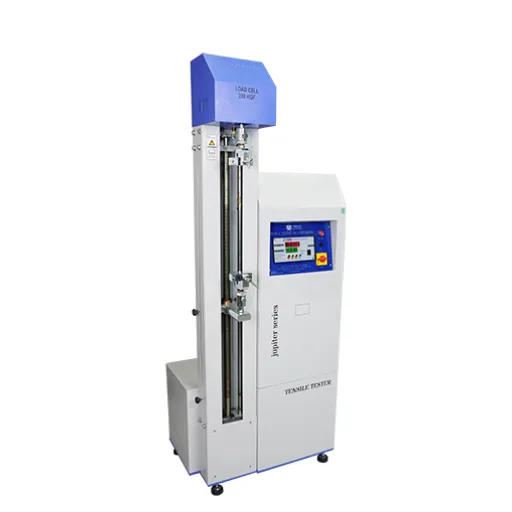
Universal Testing Machines & Tensile Testing Machines
In the world of materials science and engineering, we can all agree that without the Universal Testing Machines (UTMs) and the Tensile Testing Machine, the discipline wouldn’t be at its current state. The UTMs, unlike its fellow machines, are constructed in a way that allows them to perform a multitude of tests, which includes tensile, compression, and bending. These machines are aimed at the assessment of controlled strength, elasticity, and a range of other essential material properties.
Key Differences:
Universal Testing Machines
Perform multiple tests including tensile, compression, and bending
Tensile Testing Machines
Specialized for tensile strength and elongation evaluation
In contrast, Tensile Testing Machines operate strictly on the evaluation of tensile strength and the elongation of a material. These machines are used in the assessment of the ultimate tensile strength, yield strength, and ductility of a material specimen. With engineers in mind, these tests secure the information and data required to make sure that a material can adhere to certain standards during required stress.
Both machines focus around various industries such as construction, automotive, as well as the aerospace industry. They maintain the safety, quality, and performance standard of checking and material designs, and do so by providing the necessary data. Irrespective of whether one is testing metals, plastics, or composites, the machines used for UTMs and Tensile Testing Machines see to it that the material adheres to all the required specifications.
Impact Testing Machines & Fatigue Testing Machines
Simulation of different real-world environments, which includes high speed collisions or heavy weight free falls, is required for the accurate testing of materials through the usage of impact testing machines. Moreover, the impact tests are yet another useful method for the resilience assessment of materials, through the energy absorbed during the tearing of the material. These advanced inspection machines are used for metals as well as plastics and even aircraft technopolymers checking for performance in relation with the automotive and construction industries to meet rigorous standards.
For a material to be classified as ductile, high plasticity, metals and advanced materials, it must be subjected to high speed deformation. Industries that use high level of technology perform advanced testing, and this requires the material to be subjected to deformation testing. Stress or load, due to the constant velocities, will keep on changing, and the elastoplastic area will be constantly changing for a particular material. The elastoplastic area will keep on changing in due time and the data of that particular material will be simplified and be refined when changes are noticed.
Compression Testing Machines & Flexural Testing Machines
Compression Testing
Determines how materials function under controlled pressure, measuring compressional strength, deformation, and elasticity. Essential for construction materials like concrete, metal, and polymers.
Flexural Testing
Assesses materials’ flexibility and resistance to bending by applying force at the center while securing both ends. Critical for beam testing and structural analysis.
The use of compression testing machines is indispensable in understanding how materials function and their inherent properties under pressure. These machines provide test specimens with controlled pressure that determines when they fail, and this failing point delineates essential information of compressional strength, deformation and elasticity of a material. This is particularly crucial in relation to the building and manufacturing industry where materials such as concrete, metal and polymers are used.
Materials testing machines that are used to test the bending or flowing of materials are known as flexural testing machines. Their key job is to assess the materials they are examining in terms of their flexibility, as well as resistance to flow. While testing beams and other simple materials, one employs force at the center of the material while securing it at the two ends. Materials and simple structures’ behaviors can be tested under flow.
Applications of Material Testing Across Industries
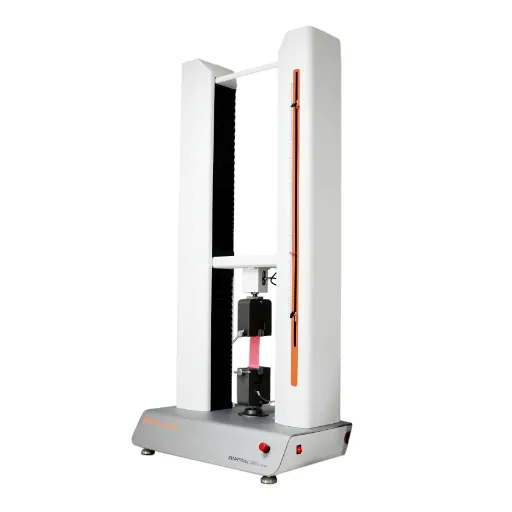
Construction Industry Applications
The safety, durability, and overall performance of construction projects is significantly improved through the application of material testing. A main focus is on building materials such as steel, wood, and concrete and the strength and flexibility of these assesses as well. Material testing aims to verify if the materials are bound for the construction site or do not meet the necessary requirements and thus need to be rejected.
An equally crucial task is assessing the capacity of materials to withstand environmental factors. A number of assessments are carried out on materials, looking into water absorption, thermal conductivity, and corrosion resistance. It is with such evaluations in place that buildings and infrastructure become able to handle different weather patterns. The ageing process is somewhat minimised and they can still stand the test of time because of its “designed for life” motto.
Sustainable Construction Innovation
Material testing helps in the innovations of the structure. Today’s growing need for sustainable development and eco-friendly structures gives rise to such assessments as new materials can be tested for their acceptability and any limitations. Their acceptability in the structure can be proved through their test for thermal and mechanical characteristics. This further paves way to new eco-friendly construction innovations as green buildings benefit the environment tremendously.
Automotive Industry Applications
Material testing machines are vital to the automotive industry as they cater to the vehicle components that are both high-quality and safe, which the cars need. These machines are used to assess the mechanical and thermal properties of materials that are required for the manufacturing of vehicles, such as steel, polymers or aluminum. Conducting a series of tests such as tensile test, elasticity test and of impact resistance can help determine whether certain materials can endure and survive the rigors of environmental stress being a vehicle components as well as an accelerant.
- Durability Testing: Ensures vehicle features have good quality by simulating real-world conditions and various load types
- Safety Analysis: Tests engine parts under high temperatures and brake systems to develop innovative safety solutions
- Lightweighting Solutions: Tests aluminum and composite materials for eco-friendly vehicles that reduce carbon emissions while maintaining performance
One of the main goals is making sure that the vehicle features are durable and have good quality. To do this, material testing machines can simulate circumstantial situations and determine how materials react to various kinds of loads. For instance, they simulate the loads on engine parts heated to high temperatures and on brake systems as well to find out how the vehicles reacts, they can come up with innovative engineering solutions for puncturing—save cars as a result during accidents.
Material testing also plays a role in addressing lightweighting vehicles in solutions aimed at carbon emissions and increasing fuel efficiency. By testing aluminum materials coupled with their improved strength composites, vehicle manufacturers can develop high performing recyclable eco-vehicles, they can set to conserve affordable and just in time while protecting and saving the environment. There is a need for these eco-automobiles, which push for environmental compliance, while vehicle convenience and safety aspects of the vehicle are not compromised, thanks to the company’s various advances in the workings of the vehicle.
Aerospace Industry Applications
The aerospace industry leverages innovative material testing equipment for designing and building safer, longer-lasting, and better-performing civil and military vehicles. A great focus of these new devices is in the evaluation of the materials which aircraft and spacecraft are made of. Metallic alloys, carbon fibers and polymers pose brand-new challenges due to the need to withstand high temperatures, pressures and even mechanical stress.
| Test Type | Purpose | Benefits |
|---|---|---|
| Tensile Testing | Evaluate material strength under tension | Ensures structural integrity |
| Compression Testing | Test resistance to compressive forces | Validates load-bearing capacity |
| Fatigue Testing | Assess long-term durability | Prevents catastrophic failures |
Material testing devices are used to carry out tensile, compression, and fatigue tests, giving companies invaluable data on their materials. Such tests are carried out to ensure that the materials chosen for use in the aerospace industry meet strict regulations and that they are capable of performing in the required operational environment. The data also helps in the research of new structures that can fly safely and, at the same time, are lighter and more energy efficient.
On the other hand, failure prevention in aerospace and the transportation industry falls under a different category of testing. One of the most beneficial methods used for testing is the non-destructive method. A system installed in a public transportation means that composes of ultrasonic scanners to test critical areas such as brake lines and cracks in the highway to prevent future breakdowns. In the case of a new aircraft, AI can reduce the time and funds that would be needed to thoroughly check a brand-new aircraft. In essence, this greatly reduces expenditure.
Benefits of Material Testing Machines
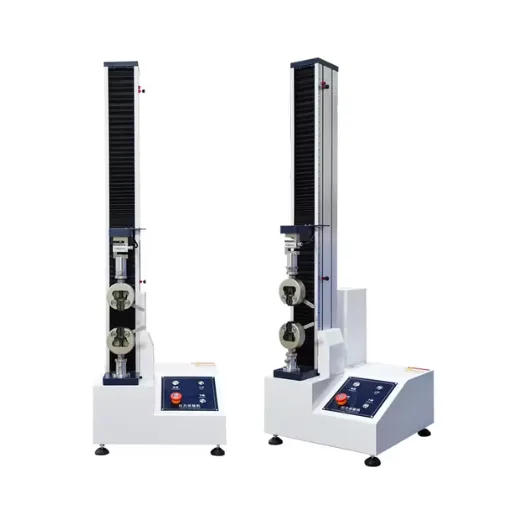
Ensuring Product Quality and Compliance
Machines responsible for material compatibility and warranty conformance contribute greatly to the welfare of the industry today. Such machines do more than just ensure that a product meets the performance levels expected of it. Through their testing of materials under a variety of conditions, such machines help in the identification of areas of improvement to the product. This sort of focus ensures the product meets with the safety standards and retains the safety of the consumer.
Industry-Specific Compliance Requirements
- Construction: Safety standards for building materials and structural integrity
- Aviation: Strict regulations for aircraft materials and components
- Automotive: Impact resistance and safety requirements for vehicle components
Material testing for various applications needs to be done following a variety of regulations. In as much as there are different industries such as construction, aviation, and automotive that deal with different laws, it is equally important to maintain public safety. Testing the material to understand breakpoints and withstand limits is a huge advantage. For instance, in the automotive industry, testing materials to specific impact and melting point specifications prevents component failures. What can be avoided and tested in material testing would be a huge benefit in the aviation industry. Military and commercial carriers can seriously boost their safety and avoid significant losses in case of emergencies or during actual operations.
Through the usage of material testing machines, processes and production methods of an industry can be improved in the long run. Manufacturers can optimize waste, develop cost effective production methods and select materials after the critical areas are identified. This contributes significantly to resource management and manufacturing efficiency.
Supporting Product Innovation and Development
Material testing machines are critical to support the effort towards product development and innovation. Their key functions involve evaluating the properties, safety, and stability of industrial products while promoting the goal to explore novel industrial goods. For example, manufacturers can avoid manufacturing failures and develop trust in their products by instead selecting the best materials. In doing so, the goods become safer and more dependable in operation. If adopted extensively, these practices will build consumer confidence and reduce manufacturing failures.
Rapid Prototyping
Advanced tools and monitored processes eliminate inefficiencies during initial R&D stages, allowing quick market entry with functional solutions.
Environmental Adaptation
Scrutiny of material behavior ensures companies fine-tune products for different environments and consumer needs.
Sustainability Focus
Testing enables review of material performance and adoption of eco-friendly materials, minimizing environmental impact.
These machines also aid in the quick and accurate design of prototypes, and with all sophisticated tools and monitored processes, they eliminate inefficiencies during the initial stages of research and development. This allows companies to quickly offer functional, innovative solutions to the market. The scrutiny on material behaviour ensures companies fine-tune their goods to different kinds of environments and address different consumers.
Product sustainability, with the use of materials, is enhanced through the use of material testing. Through the testing of materials, manufacturers can review material performance and imbibe eco-friendly material, hence minimizing the recycling of eco-friendly materials. The result is in alignment to increased global awareness and is sustainable, and hence, there is a financial increase. To sum up, material testing machines guide industries through the delicate process of modernization and the quest for new products by ensuring a tightly controlled development and innovation cycle.
Reducing Costs and Increasing Efficiency
With the support of material testing equipment, material testing industries are helping lower the expense of utilizing materials by offering data that is accurate and can guide one on how to optimize the materials. The better precision in the data offered helps in reducing the waste and improving the quality of products. This indeed help the industries as they are able to dedicate themselves to reducing the waste of the materials as well as quality improvements of the products which can be marked as a certain product. The quality of a certain product can be marked throughout the industry.
- Early Detection: Equipment helps identify bugs and flaws early in production cycles, saving costly failures downstream
- Quality Assurance: Prevents expensive redesigns by ensuring materials meet specifications from the start
- Automation Integration: Advanced automation technologies speed up testing while reducing human error and maintaining quality standards
Moreover, with the help of material testing equipment it also helps with the difficult stage of quality assurance of a product. As seen in case history, with the help of the equipment early bugs and flaws of the product can be noted and rectified, hence saving costly failures in the course of a production cycle. The use of equipment in testing different kinds and formats of materials with respect to quality serves to mitigate newer and expensive redesigns down the line.
Furthermore, the equipment is critical in the proper implementation of new automation technologies. The ability to automate speeds up the testing and the abilities and functionalities that are different can be integrated at a faster rate. The deep testing of the products help in ensuring that the tests are carried out perfectly and with respect to time as well as the limited human errors. This deep testing helps in increasing the speed of the testing equipment and maintaining the quality control standards established. This helps both in quality and speed as far as the equipment is concerned.
Emerging Trends and Technologies in Material Testing
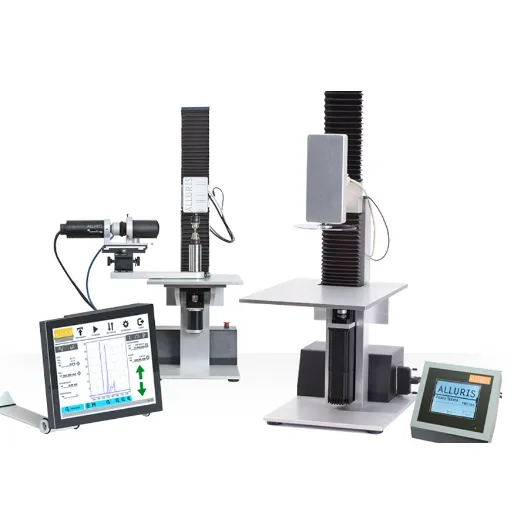
Advancements in Testing Systems
There are testing systems set aside for testing material that are very critical when it comes to evaluating properties and performance of material in various conditions. The improvement of such machines is seen in that their validation, flexibility, and efficiency enables construction and manufacturing fields to be improved because with more precise and accurate testing we get more precise results.
Key Technological Advancements
Automated Systems
Reduce human intervention and testing inconsistencies
Advanced Sensors
Enable real-time data capture and processing
One very vital advancement comes with the introduction of automated testing systems, which use advanced technology for testing material and in return reduce the amount of human intervention. In so doing, automated testing systems reduce the system testing inconsistencies. Testing with reduced automation testing lead times is considered new and vital to industries such as manufacturing.
Another development is the addition of sensors and advanced testing technology into the automated testing machines. The automated testing machines with new technology machines literally allow real-time data capture and data processing. Coupled with the software setup and customization combined with new technology, such machines make it easier to set up and use new software, which means that requirements of the material to be tested can be set up in minutes, and this requires automation. All of these systems offer significant improvements in the testing of materials, ensuring higher and more secured levels of safety and performance.
Integration of Automation and AI in Testing Machines
Automation and AI have significantly changed the way materials testing machines work, making their operation highly efficient, precise, and reliable. Automation ensures consistent tests by removing the variability introduced by human operators thus improving accuracy and repeatability. These automated systems can easily perform complicated test procedures with scant supervision, thereby realizing benefits in terms of time-saving, and cost in industrial and research environments.
| Technology | Benefits | Applications |
|---|---|---|
| Automation | Consistent tests, improved accuracy, reduced human error | Complex test procedures, time-saving operations |
| Artificial Intelligence | Smart data processing, pattern recognition, self-learning | Data analysis, predictive maintenance, optimization |
AI enables further automation to be realized in a materials testing machine, based upon smart data processing and decision-making. Data can be collected in great volumes during the process of a test. AI can then take these and filter into any unique pattern or form for those opportunities that a human eye might overlook. The machines’ capability of self-learning may work towards a future of immense accuracy. Test machines gradually evolve by improving their accuracy and adapting to a change in testing methodologies and the material properties.
The synergy of automation and AI enhances the applicability and ease-of-use of materials testing machines. These machines now conveniently conduct tasks that include variable test parameters, results monitoring in real-time, and comprehensive report generation. This ensures the maintenance of product quality under strict safety parameters, from the construction sector to aerospace. Together, automation and AI form a standardized, fast, and competitive solution for future material science.
Future of Material Testing in Various Industries
Industries like additive manufacturing, healthcare, and space exploration, just like those in the construction and automotive sectors, will require sophisticated testing to meet safety, performance, and environmental standards. While most industries have an acceptable chance of meeting the future criteria, all have to take extreme steps to meet the requirements of material testing.
Future Trends in Material Testing
- Enhanced Automation & AI: Faster, more accurate testing with reduced human error
- Predictive Capabilities: AI-driven material behavior prediction under various stresses
- Sustainability Focus: Testing for recycled and bio-based materials
- Environmental Impact: Focus on eco-friendly testing processes and green technologies
Automation and artificial intelligence will help ensure that the testing processes are concise. Automation, for example, enables faster, more accurate testing, thereby helping to lessen the risk of human error while increasing efficiency. AI on the other hand will enhance the quality of testing as it can perform immediate data analysis, predict the material’s reactions under different stresses, and help with the development of new materials that possess optimised qualities. These advancements will create value by accelerating innovation and reducing cost in several of the processes.
Sustainability and environmental stewardship are becoming key drivers in material testing. As demand grows for green and eco-friendly solutions, there will be a shift towards testing for recycled, or bio-based materials. There would be a focus on testing for standard processes that are reasonable in both performance and their impact on the environment. This would result in the development of green products and technologies and would contribute to the green objectives by ensuring product quality.
Frequently Asked Questions (FAQ)
For what are Universal Testing Machines used primarily?
For evaluating the stress at failure limit and strength of a material, such as its tensile strength, hardness, and durability, Universal Testing Machines are crucial. Manufacturers must validate proper production and materials they conform to meet distinct requirements, in a bid to provide equipment and tools that satisfy and meet test requirements.
What is the tensile strength test?
It is the test where they analyze the material to get the maximum breaking force of something with the material. For example, you get to know the strength of metals and plastics, which we deploy in real-life in order to get superior material.
What is universal tensile testing meant for?
It is a high-grade general purpose testing machine; they deploy for extensive courses such as the tension, compression, and bending tests, which fall under materials testing. It is quite suitable for the testing of numerous materials; this makes it a very important item in laboratories and manufacturing companies.
What measures are taken to ensure that the testing machines produce reliable test results?
Testing machines that have known calibrations are consistently employed. The machines have testing software that is deployed for the purpose of getting test results. Reliable testing results are a must in materials testing because in the end, the data must be used for something material.
What can be tested under a material testing machine?
Material testing machines can be used to test a wide range of materials, such as metals, plastics, ceramics, and composites. Manufacturers can apply the right materials for their products because they can understand how materials behave under different conditions.
What aspects dictate the selection of test systems?
One factor that plays a primary role in the selection of material testing devices is the specific intended application and the material. For example, material testing devices as well as machines are required to be fitted depending on the material’s specific mechanical properties. One example of such mechanical property could be the tensile strength testing.
How significant are the ASTM requirements in material testing?
Material testing methods provide testing guidelines by issuing standards, which are useful for many materials. The ASTM is a standard and a testing guideline issued by methods to ensure that the materials issued for production are consistent and meeting the specific testing requirements.
What are the roles the testing software plays in material testing?
Reporting and monitoring tests—and therefore materials—over time are prominent, but that is only one aspect of the task of testing software. One very important and critical task is how much the given testing standards and specifications are being followed, as the software informs it.
References
-
Most Popular Types of Material Testing Equipment – NextGen Test – Explains how universal testing machines are used for tensile stress, compression strength, bending, and other mechanical tests.
-
Universal Testing Machine – Wikipedia – Provides an overview of the machine’s applications, including tensile, compressive, flexural, bending, shear, hardness, and torsion testing.
-
Applications and Benefits of Using Tensile Testing Machines – Presto Group – Highlights the versatility of tensile testing machines for various materials like metals, plastics, rubbers, and textiles.
-
Get Accurate Strength Measurements with a Material Tester Machine – CSC Force – Discusses how material testing machines measure the physical and mechanical properties of materials.

